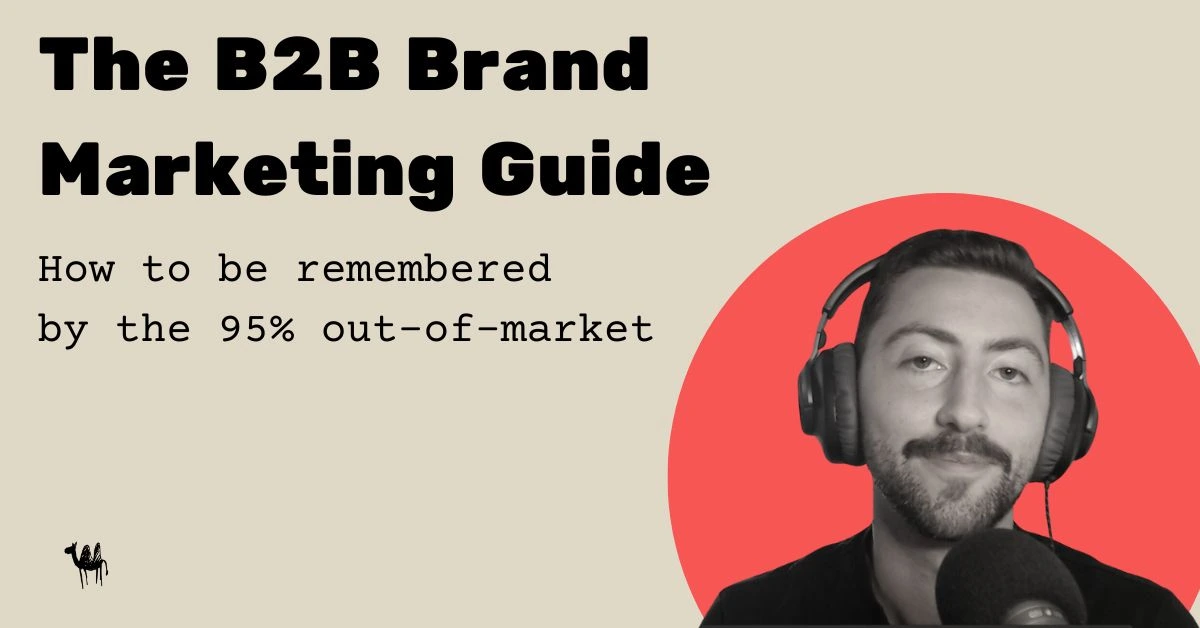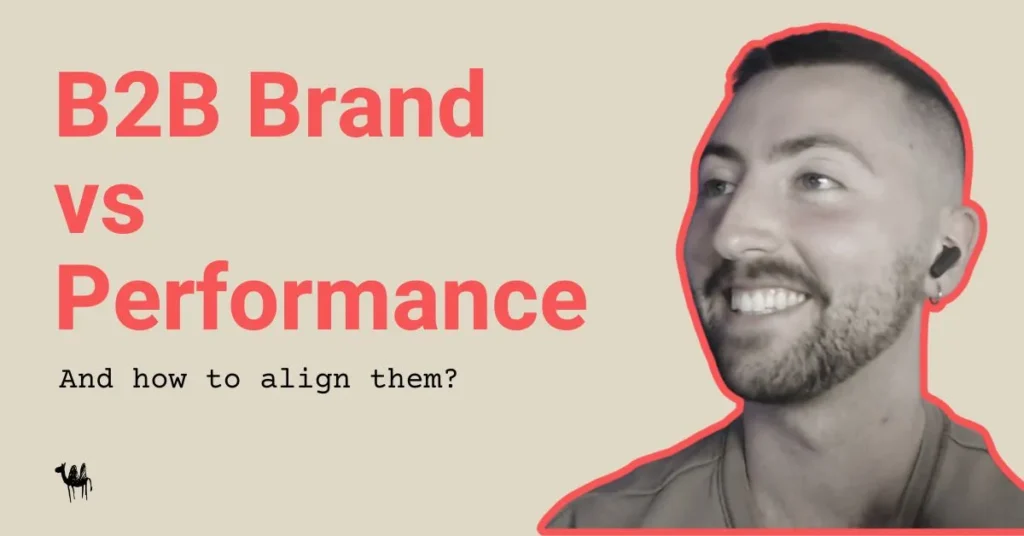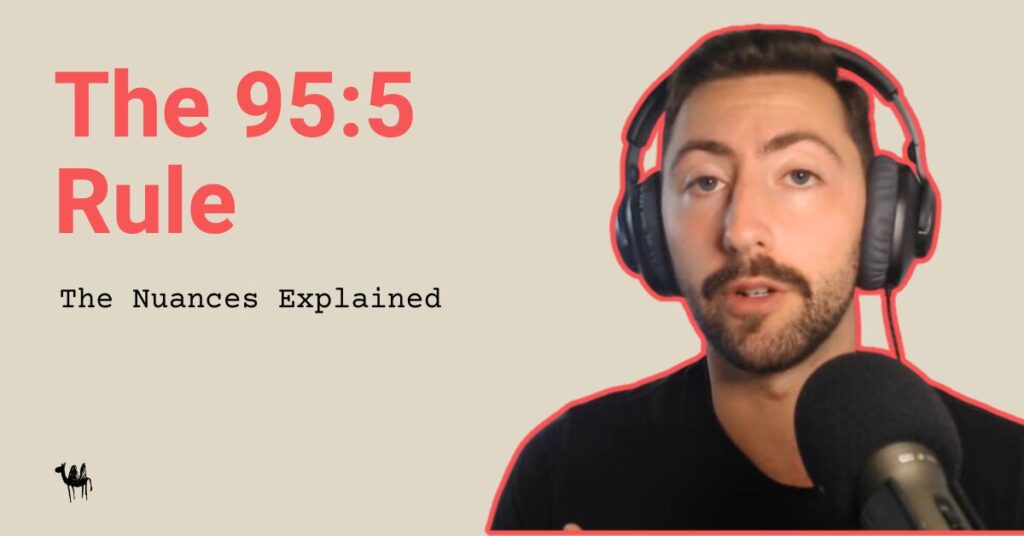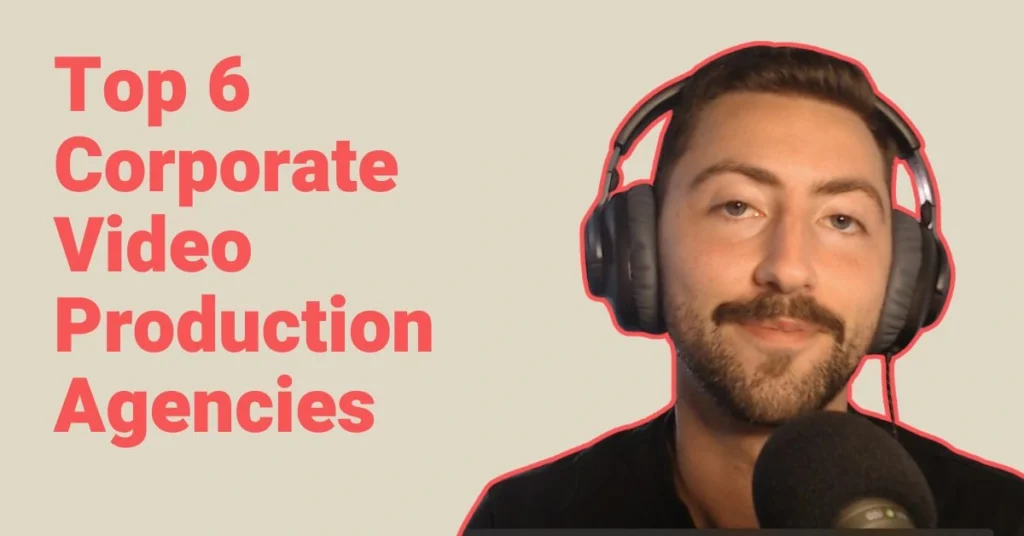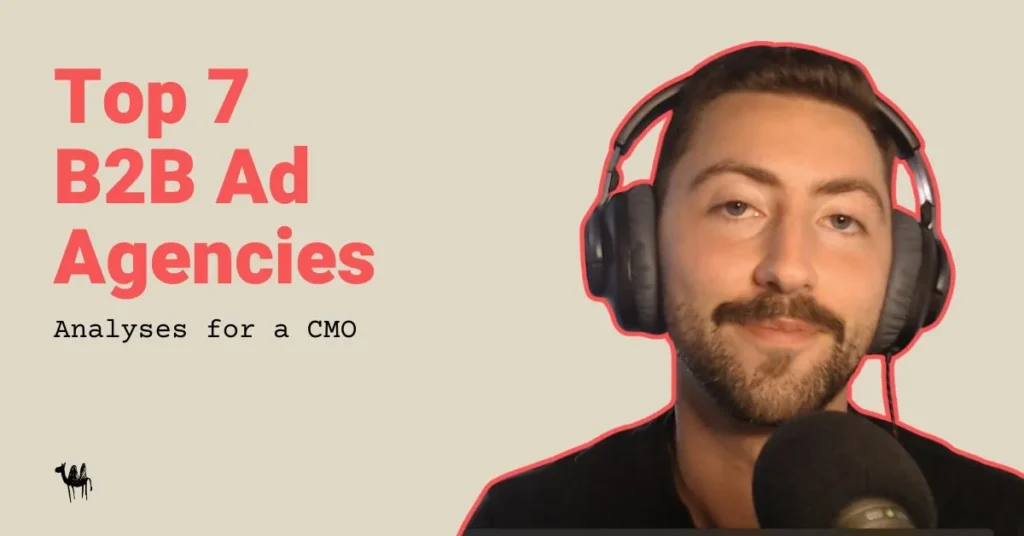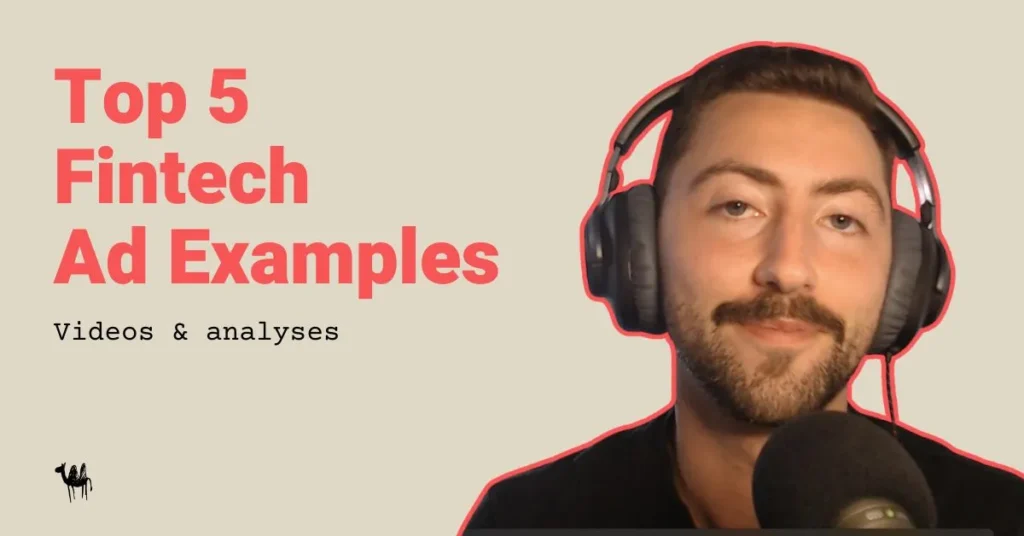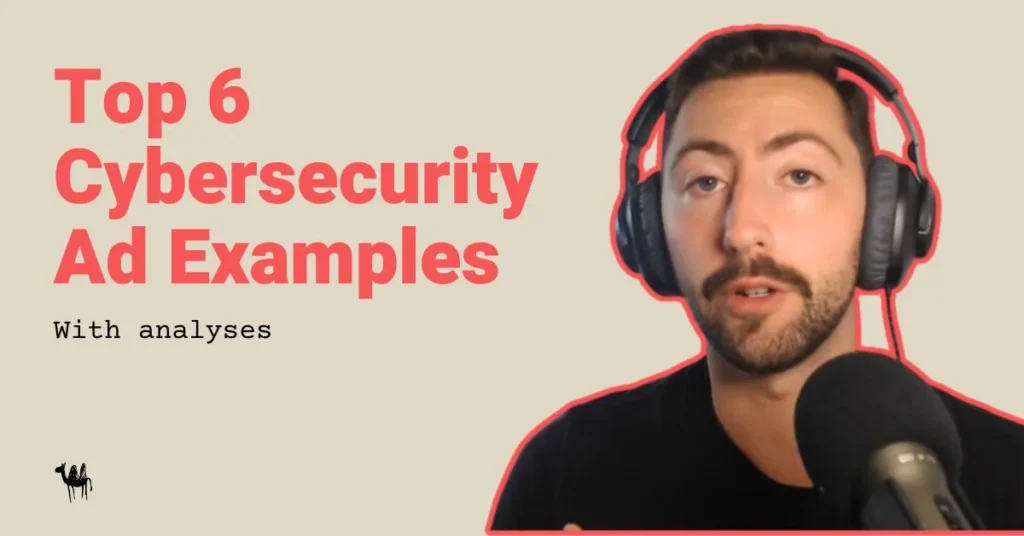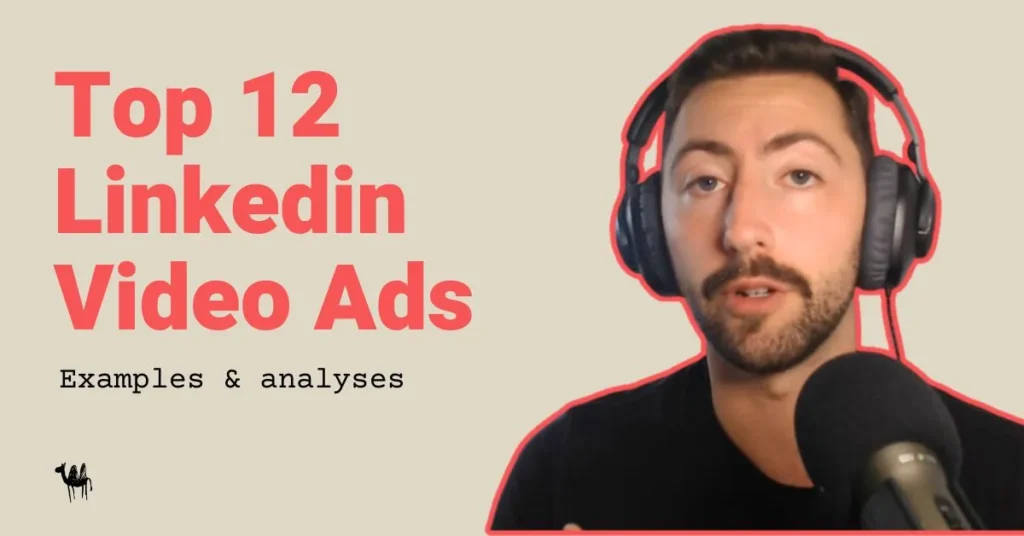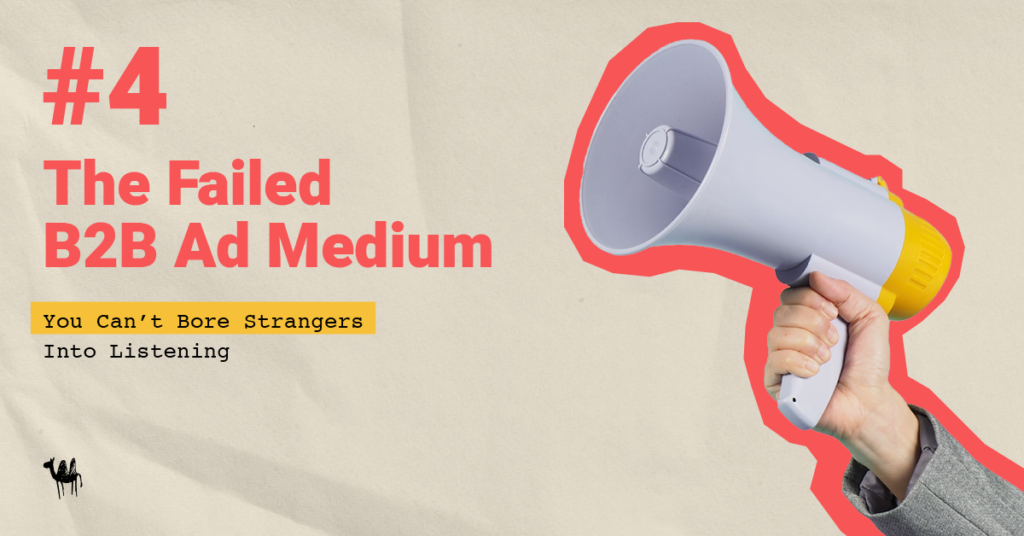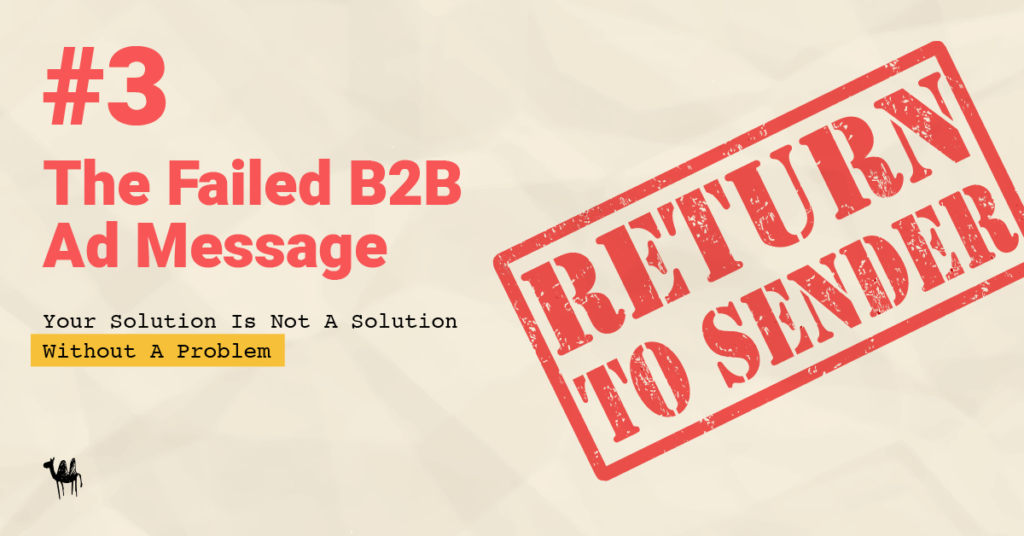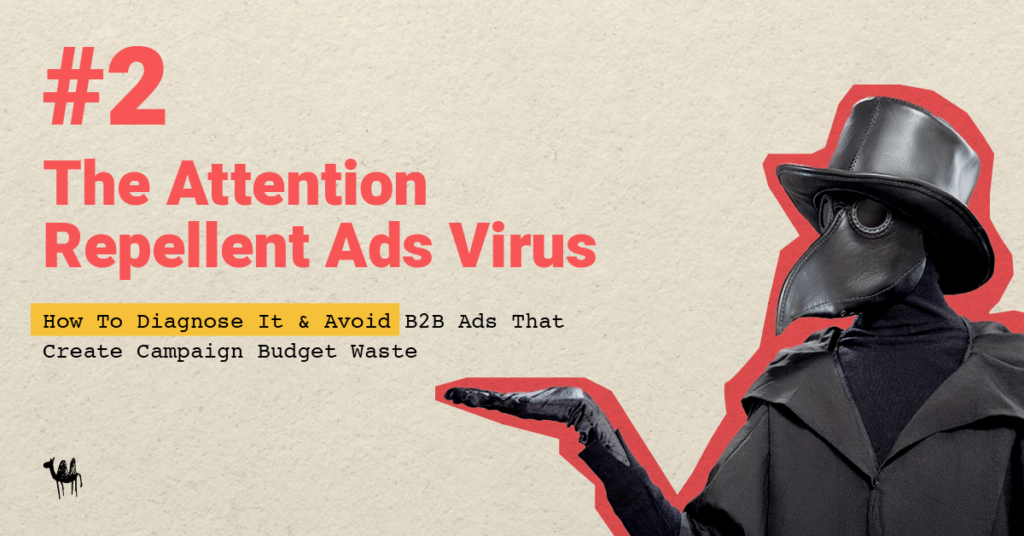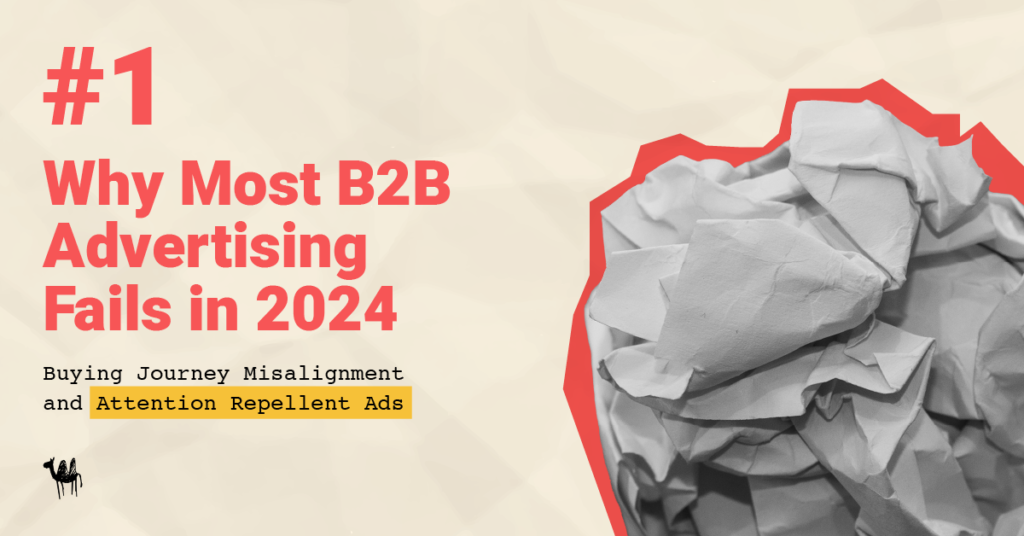Brand.
It’s one of those words with 1000 different interpretations.
Take a quick scroll on Linkedin and you’ll see everyone’s got their own meaning for it.
There exist so many different POVs on how to do B2B Brand Marketing.
And all of them have strong evidence and arguments for why they’re right.
My goal in this article is to gather research and present you a guide created from different perspectives of:
- What B2B brand marketing is
- The 95:5 Rule
- Aligning B2B brand marketing and performance marketing
- How to design and execute B2B brand campaign strategy
- Planning and executing your B2B brand campaign
If you’re already familiar with the ins-and-outs of what B2B brand marketing is, the first section may be less insightful.
In that case, I recommend skipping past the couple of sections for less obvious content on creating a strategy for your own company.
Section 1: What is B2B Brand Marketing?
Like I mentioned, ‘brand’ is used in so many ways and interpreted differently in different situations.
I’ve once seen on Linkedin two marketers have a heated disagreement despite both thinking that a marketing strategy should be done in the same way.
It was like they were both talking about apples. Except that one was using the word, ‘banana’ to describe it. And the other using the word, ‘orange’.
Words create different perceptions.
So, let me start with defining words that I will use in this guide.
A Brand:
the name of your company.
Brand Image:
A brand image is your desired mental and emotional image of your company in the minds of buyers. It’s not only a logo or tagline but also the reputation, expectations, and associations that you want people to have with your company.
Brand Perception:
This is how an individual really sees your company. The only difference from brand image and brand perception is that other things in an individual’s mind can affect how they perceive your company. You may have a brand image that you want people to see, but competitors that they’re aware of in your category can distort that perception.
Branding:
This is about shaping your brand’s identity. Branding involves designing visual elements, like logos, colors, and typography. It is about ensuring that every interaction a potential customer has with your company reinforces who you are and what you stand for (and what you stand against).
Brand Building:
Brand building involves delivering consistent experiences in order to create a lasting brand image. This is a full company initiative. All interactions with your company work towards a desired brand image – marketing, sales, customer success, and product.
Brand Marketing:
Brand marketing is the marketing done to influence buying behavior for the long-term. The goal is to develop strong Mental Availability, being the brand remembered as the solution to a specific problem when the individual is faced with the problem or in a buying situation.
To understand how to actually do brand marketing, align it with your performance marketing, and execute the right strategy, we must always go back to the 95:5 Rule.
The 95:5 Rule in B2B Marketing
Understanding the 95:5 Rule
The 95:5 Rule, based on research by Professor John Dawes, explains that only about 5% of B2B buyers are actively looking to purchase at any given time, while the other 95% are future buyers who will enter the market based on their own timing and needs. This idea is based on the fact that in many B2B categories, companies change suppliers every 5 years on average, with only a small fraction being ready to buy in any given quarter.
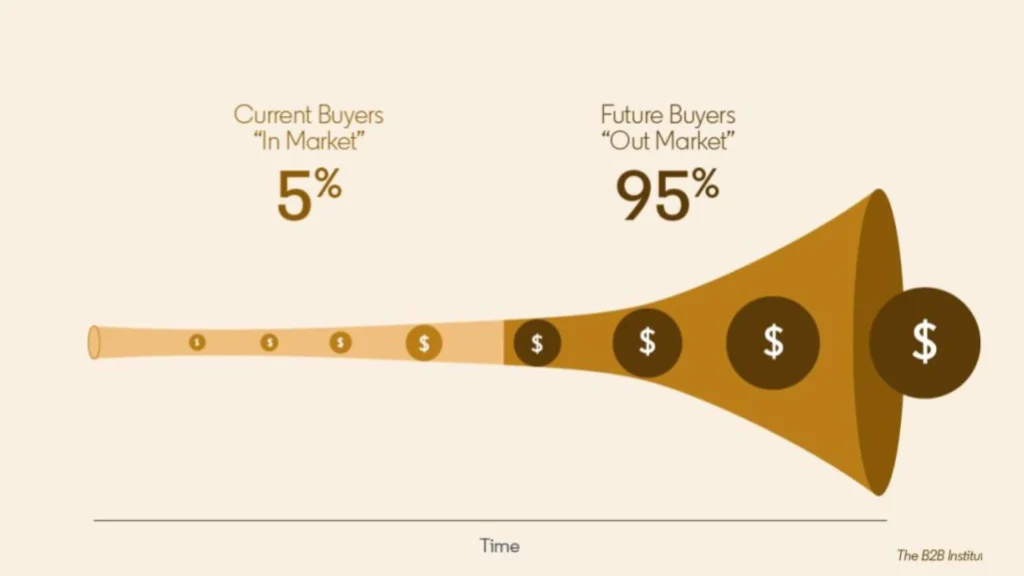
If your grade school math skills haven’t left you, that means:
20% are in-market each year.
80% will become in-market in the next 4 years.
Of course, this can depend on your category. It may be even less than 5% in a quarter!
Dale W. Harrison, who has been on the buying committees of several Fortune 500 companies, sums up two key factors to be more precise for your own category.
You can calculate:
- Inter-Purchase Period: The average time between purchases in your category.
- Decision Window: How long buyers are considering their options before making a decision.
The percentage of buyers who are in-market at any given time is ➜ (12 ÷ Avg. Inter-Purchase Period in Months) × Avg. Decision Window (in fractions of a year).
For which reasons is a B2B buyer not in-market?
There are multiple reasons that a B2B buyer is not in market.
They:
- are not experiencing any of the symptoms of the problem
- are locked into a long-term contract
- have budget constraints
- have a lack of awareness of the problem (the root cause of their symptoms)
- are satisfied with current vendor
- have a lack of decision-making authority
- have a lack of resources (i.e. time)
- feel market uncertainty
- have a lack awareness of solution
I give more concrete examples for each of these reasons in this article on the 95:5 Rule.
When you break it down into this list of reasons, you can start to see how 95%, or the large majority, of B2B buyers simply can’t be convinced or significantly influenced to buy now.
But this is where the debate gets interesting…
Does the 95:5 Rule apply to all categories?
The majority of the research done is based on mature categories of obvious solutions to obvious problems.
What this means is that most buyers become aware of their problem on their own and think of the obvious solution to it.
For example, when your business starts to grow and you can’t just use email and linkedin to communicate with employees, the problem is pretty obvious to you: you have fragmented communication.
The obvious solution is a tool that allows one unified space to communicate with your team (Slack).
Many mature B2B categories are obvious solutions to obvious problems. A few examples are:
- CRM
- banking
- law services
- project management tools
But what about solutions to non-obvious problems? Problems where multiple data points are needed to understand the root cause of their pains?
Buyers don’t become aware of these problems on their own as easily and therefore stay out-of-market because they aren’t aware of the problem.
A few examples of non-obvious problems (more explanation in our article on the 95:5 Rule):
- strategic misalignment
- risks
- outdated strategy
- leaks
These are usually problems that we can’t always become aware of on our own, and therefore don’t search certain categories of solutions until we do become problem-aware.
More research is needed on this part of the 95:5 Rule. But with that said, the overall principle of the 95:5 Rule should still be the foundation to all your marketing:
Don’t get too caught up with the numbers. Just remember: Most buyers will buy in the future, not now.
The In-Market Challenge And Demand Gen Waste
What makes the 95:5 Rule so important to understand is what leads an extreme waste of budget in B2B marketing. Two extremely important principles to understand is this:
Principle 1: There is a limit to how much we can convince out-of-market buyers to buy now.
Principle 2: There is a limit to how much you can convince in-market buyers to buy from you, and not competitors.
For Principle 1, we’ve already explained all the reasons out of our control and influence that most buyers are not ready to buy now.
But for Principle 2, you need to understand that 80% of B2B buyers have a list of vendors in mind before they do ANY research. And of that 80%, 90% will choose a vendor from that day one list.
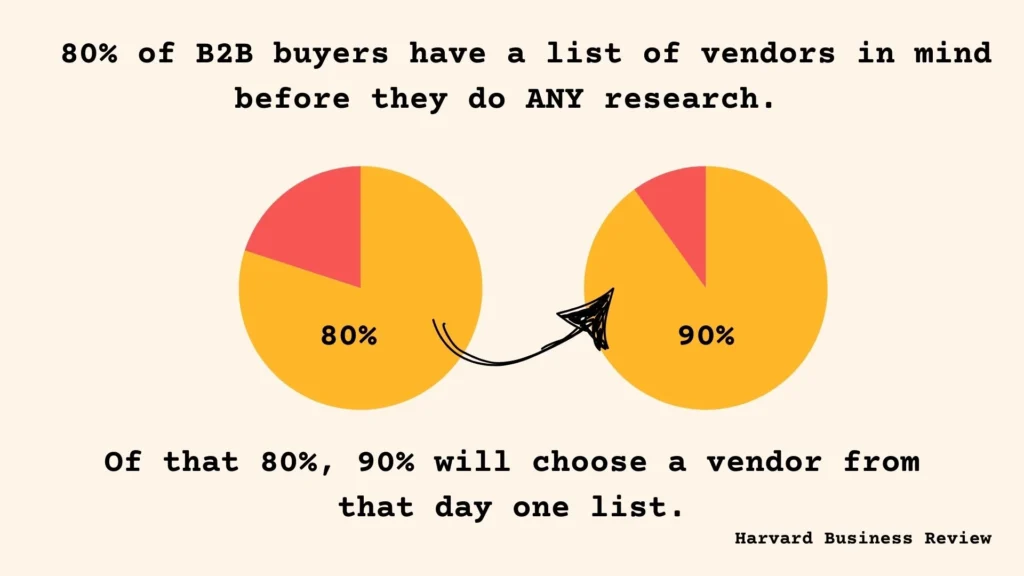
Source: Harvard Business Review
This research echoes what Al Ries and Jack Trout, the godfathers of positioning, evangelized as one of the most important laws of marketing back in the 70’s: The Law of Leadership.
The majority of purchases are for the brand that was first into the mind of the buyer. That’s because in marketing, it’s not about the reality. It’s about the perception of reality. And when you’re the first in the mind of the buyer, you’re often perceived as the best for a certain category. And when some other brand tries to tell a buyer that their brand is better, the buyer simply doesn’t perceive it to be true.
Most of B2B Demand Gen in 2024 doesn’t take this into consideration. It focuses on trying to convince people that they should buy now and that they’re the best – despite there already being brands that were first in their mind.
Your marketing can tell me how great your workspace communication tool is, how much better it is, the benefits, etc. But Slack and Teams have been the first in my mind for years. I perceive them to understand my problem the best, as well as the solution to it.
My mind has already been made.
What does this mean in relation to the 95:5 Rule?
This means that if you are not in the buyer’s mind BEFORE they become in-market, there’s a very low chance that you’ll be the brand that is selected.
Mental Availability as the Primary Goal
If it was simply just ‘being in the mind of buyers’ before they become in-market, B2B brand marketing would be pretty damn simple. And from all the B2B brand campaigns that I have seen over the years, I imagine many marketers do think it is that simple.
But this way of thinking overlooks why buyers buy in the first place.
B2B buyers are pushed to search a specific category of solution motivated by a specific problem to achieve a specific outcome.
When we remember this fundamental and simplified process of how buyers buy, we realize that it’s not just being ‘top of mind’ or ‘remembered.’
The goal is being the brand that is remembered as the solution to a specific problem when faced with that problem.
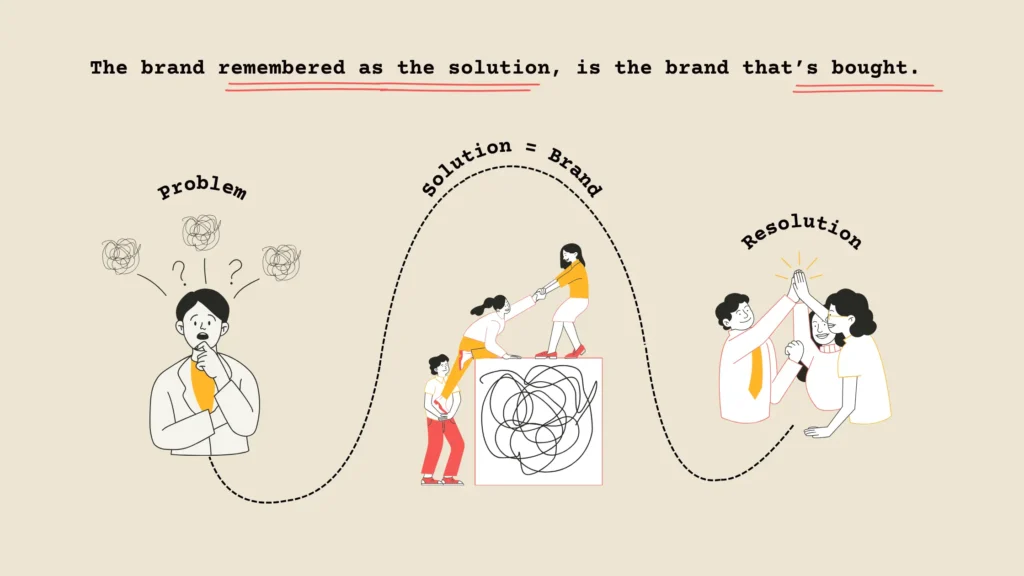
Instead of focusing on a product’s features or benefits, like most of marketing, we’re focusing on how buyers think and act when buying.
Here are some concrete examples:
Your computer got hacked. But you recovered it. You don’t want to go through it again and decide you need a category of solution: cybersecurity for personal laptop.
What brand do you think of as the go-to solution for this category? McAfee? Norton?
Your small agency has hired several new employees and onboarded more clients. It’s becoming too difficult to manage the projects in Slack. You need a category of solution: project management tool.
What brand do you think of in that moment? Asana? Monday.com?
An easy way to think of this is by remembering that our brains are the first search engine that we use to search for a solution.
When you see fire in your house, it motivates you to think of and search for…? A fire extinguisher!
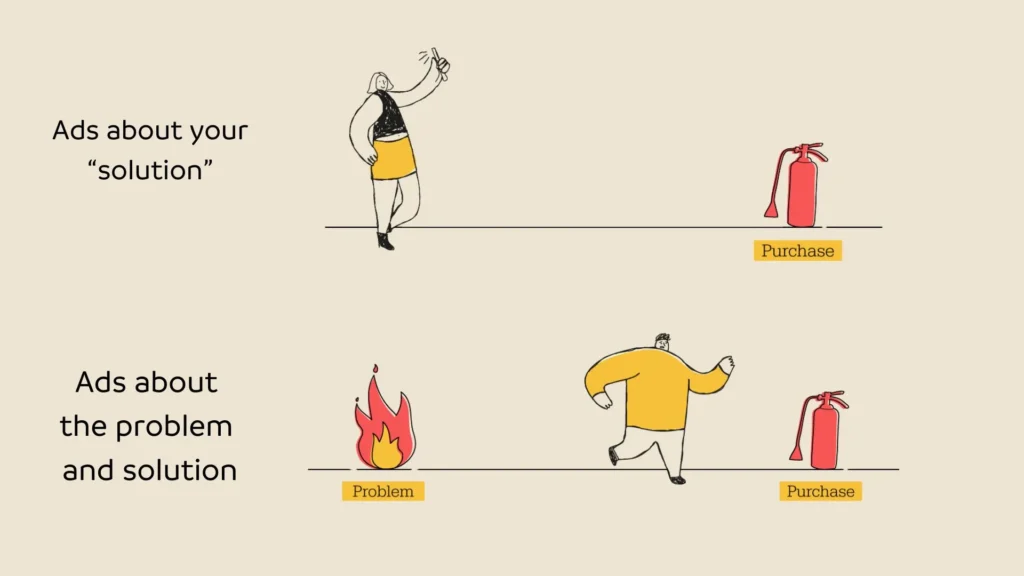
This is where the term building “mental availability” comes into play — the likelihood of your brand coming to mind when a buyer needs your category of product or service. You achieve this by associating your brand with key Category Entry Points, or the specific triggers that lead a buyer to consider purchasing.
What are Category Entry Points?
A Category Entry Point (CEP) is the specific pain caused by a problem that triggers a buyer to think about or seek out a particular category of solution. It’s essentially the context in which a buyer first enters the market for a solution and becomes receptive to specific brands within that category.
In simpler terms, a Category Entry Point is the mental “door” buyers walk through when they begin to search for solutions to a problem. Brands that are associated with a range of relevant Category Entry Points have a higher likelihood of being recalled when buyers face those situations.
Here is a great example of a Webflow brand video ad where the message focuses on the category entry points to its category of solution: modern website editor.
The root problem is website editors that just simply stop working for no reason.
The pains caused by this problem show up in different ways:
- the images disappearing
- forcing something to fit into a space
- trying to diagnose the strange problem and saying, “I think that’s the problem”
Now, when you experience these pains, you think of Webflow as the category of solution: modern web design.
CEPs focus on understanding the why, when, and how of a buyer’s decision-making process, helping brands position themselves as the go-to solution for the problem buyers are actively trying to solve.
I’ve found that there are many different POVs of what a ‘problem’ is. But I’ve personally found that the simplest way to understand CEPs is by distinguishing pains and the root problem.
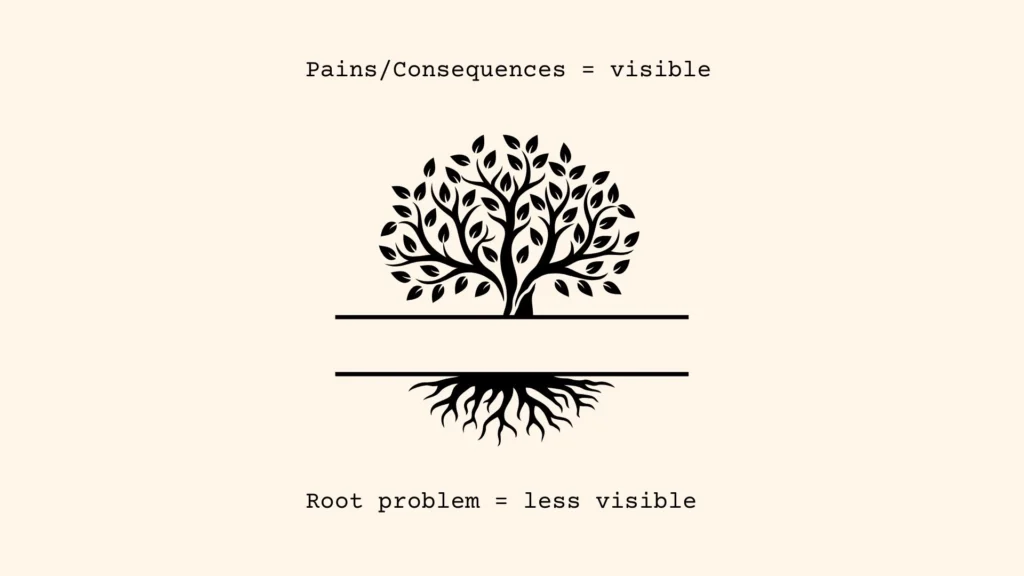
Pains are visible and are what buyers care about. They’re what motivate buyers to search a solution (in other words, enter a category of solution). But understanding the root problem is what determines which category of solution.
You could have a headache, which is a symptom of many different root problems: dehydration, lack of oxygen, too much caffeine, a virus, or cancer.
What category of solution you need depends on the root cause! If a doctor offers to do brain surgery for $100k without articulating what the root cause of your headache is, you’re not going to believe they know how to solve your problem.
This concept is called Solution Believability.
This is why we talk about how important it is to not just own the symptoms but also the root problem in the mind of buyers. This way, buyers connect their pains to the problem you solve.
Aligning B2B Brand Marketing vs. Performance Marketing
In order to align brand marketing and performance marketing, let’s first define the difference between the two.
The difference between brand marketing vs. performance marketing
The fundamental difference between brand marketing and performance marketing lies in their timelines, focus, and metrics of success:
Brand Marketing:
- Timeline: Long-term (quarterly to years)
- Focus: Building mental availability, brand awareness, and emotional connections
- Goal: Becoming the go-to and preferred choice when buyers are ready to solve a specific problem
- Success Metrics: Brand recall, market share growth, and overall reputation
- Tactics: Problemotional ads (problem-focused and emotional), PR, Social Media Marketing, Event Marketing, SEO (for informational intent)
Performance Marketing:
- Timeline: Short-term (days to quarterly)
- Focus: Immediate results and driving specific actions
- Goal: Driving leads, conversions, and direct revenue from in-market buyers
- Success Metrics: CTR (Click-Through Rate), CPA (Cost Per Acquisition), lead volume, and ROI on individual campaigns
- Tactics: Targeted ads, email campaigns, paid search, retargeting, SEO (transactional and high-intent searches) and conversion-optimized landing pages
The B2B Institute frames how our marketing content, whether that be ads or social media content, should be different for the 5% in market and the 95% out of market.
For in-market (5%), be rational to help the consideration in buyers’ decision making.
For out-of-market (95%), be emotional to create memories and associations for the long term.
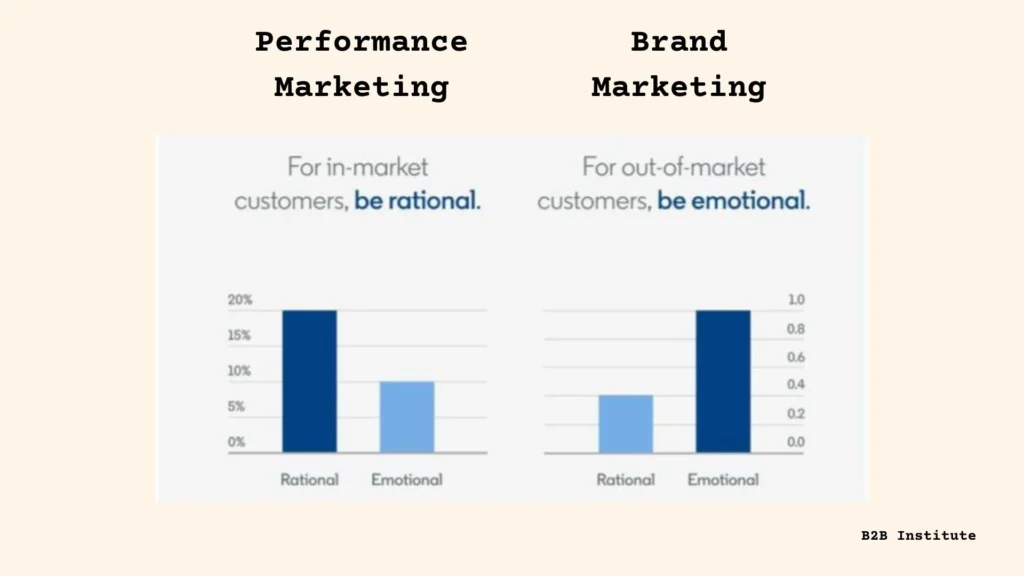
This is the HOW you communicate. It’s the communication style.
But what about the WHAT you say? The message? How does this differ?
For out-of-market buyers, you should communicate more emotionally about the problem your brand solves and that buyers have (or will have).
For in-market buyers, you should communicate more rationally about the solution to their problem.
This is how you meet buyers where they are in the B2B Buyer’s Journey.
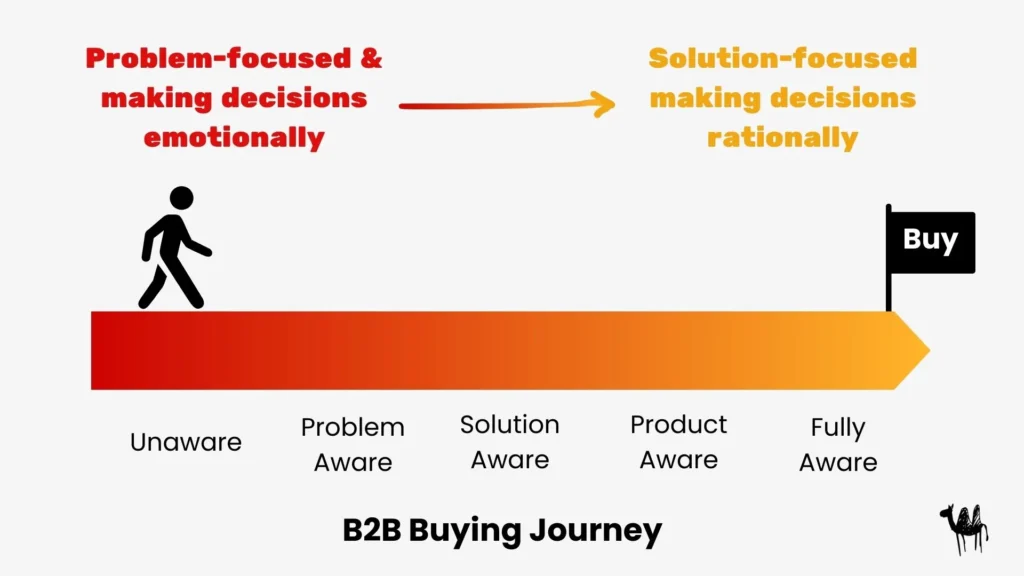
Understanding these distinctions allows marketers to not just balance both approaches but make them work better together.
SAS Viya launched a brand campaign that proves how brand makes performance more effective.
To quote the B2B Institute’s case study, SAS Viya achieved:
- “3x increase to Lead Gen Form completion rates
- 31% increase in engagement rates
- 9M new buyers reached on LinkedIn in 6 months
- 28% decrease in Cost per Lead
This impact was not felt in isolation: sales leaders also saw improved sales outreach following the launch of ‘SAS Viya,’ and talent leaders saw improved acquisition outcomes.”
When your brand is known, liked, and associated with a problem, buyers remember this in every other interaction with your brand.
Shifting Priorities in 2025 from performance to brand
Most B2B companies in 2024 focus only on performance marketing without any brand marketing.
What happens when you depend on performance marketing without brand marketing?
B2B companies often overspend on performance marketing, particularly Google Ads, at the expense of long-term marketing efforts for the 95% of out-of-market buyers.
Chris Walker, founder of Refine Labs and CEO of Passetto, analyzed CRM data of dozens of B2B companies and saw the same pattern:
- 90%+ of Marketing program budgets spent on Lead Generation strategies
- Marketing gets thousands of MQLs and celebrates $100 cost per “lead”
- “Leads” convert to customers at 0.1%
- 1,000 SDR follow up cadences to Close 1 deal
- 5-10+ year CAC payback periods
And these kinds of stats only get worse as Linkedin and Google ads rise in cost.
These kinds of statistics from focusing only on the 5% in-market buyers result in a broken B2B business:
❌ no profitability
❌ no scalability
❌ no sustainability
When you pair this evidence with the principles that we discussed earlier in the article, it shouldn’t be too difficult to understand why you can’t grow a B2B business with only performance marketing.
The majority of competitors fight for a minority of buyers. And the minority of competitors fight for a majority of buyers.
B2B brand marketing is like fishing in a pond full of fish with only another fisher. While performance marketing is like fishing in a pond with only a few fish, where the shore is lined with dozens of fishers.
This is not to say that performance marketing is wrong. Performance marketing is needed. But for the short-term in order to sustain the long-term marketing that will attract buyers itself while also making the performance marketing more profitable.
How B2B brand marketing makes performance marketing more effective
When your brand is known, remembered, and recognized, the rest of your marketing and sales works more effectively.
If you had 2 people that asked you if they could crash at your place for the night, one being someone you know and one being a complete stranger…
Who do you think you’d be more likely to say yes to?
Brand marketing works in a similar way.
When buyers remember you and associate you with a problem they have, they’re more likely to take the action you want them to.
When buyers see your other ads, they remember the problem you solve and decide that they should listen to what else you have to say about it (because it’s valuable to them) instead of scrolling by.
When they see your marketing content, they remember that you understand their pains and care, so they decide to take the time to read all your content.
When they are researching how to solve their current pains, they remember that you help rid the pains caused by a specific problem and then decide to go to your website to learn how to solve it.
When they do a Google search, they recognize you and not the others that show up on the search engine results page.
When they are shortlisting services to buy, they remember you as a solution to an important and urgent problem, deciding to put you at the top of the list.
When they are with peers from their network, they remember to mention you as the solution to the problem their peers also suffer from.
Don’t believe this is how it works?
Well, imagine the opposite. Starting from the bottom of that list, go back and replace the word ‘remember’ with ‘forgot.’
Doesn’t quite work, does it?
One way of looking at this is through how Les Binet and Peter Field frame it in their book, The Long And Short Of It.
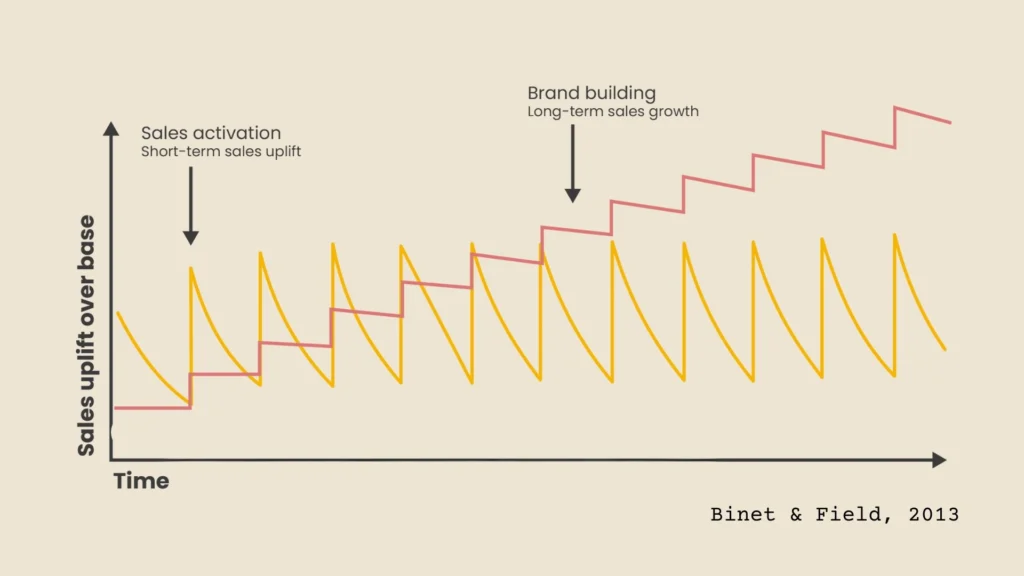
Section 2 – How to design a B2B Brand Campaign Strategy
For simplicity’s sake, the following will be about designing a B2B Brand Advertising Campaign.
There are different kinds of B2B Brand Campaigns that can be launched. But since most companies are likely planning a brand advertising campaign and the principles here can be used for other tactics, I’ve decided it best to stick with advertising.
What is the goal of your B2B Brand Campaign?
You could argue that there are many goals of your campaign; I’m sure you have others that aren’t the following 3. But from every brand marketing expert I’ve talked to and learned from, these are the top 3 to set.
Differentiated in a crowded category
Your brand should be perceived as meaningfully different from others in your category. This doesn’t mean a list of “our differentiators” that everyone else in your category uses as well. It means that buyers are not comparing you to others or simply not considering others.
Buyers know, like, and trust you
Brand awareness is not simply being aware of your brand. It is being aware of your brand, their problem it solves, and how you solve it. In other words, the brand and its category. Clarifying it this way will keep you from doing any kind of brand marketing that is only placing your logo everywhere without any meaningful relevance to buyers and their buying journey.
Remembered when ready to buy
The 95% of out-of-market buyers should be able to remember your brand as the solution to a problem when they face it. They do not have to be ‘top of mind’ and constantly thinking about your brand all the time. What matters is that their brain puts your brand at the top of their mind in the moment when they start facing the problem and searching a solution.
Define which metrics to measure
How do you determine whether or not your brand advertising campaign is achieving the goals from above? This is a fairly big debate because of the difficulty of measurement and attribution for brand marketing. But from our research, these three show up often.
Brand Recall with Problem-Solution Association
Measure how many people recall your brand in connection to the specific problem your product solves. This goes beyond brand recognition and includes an understanding of what you do.
Metric: % of survey respondents who correctly associate your brand with their problem and your solution.
Cost of Lead
Measure the cost of lead produced from your performance advertising (MoFu and BoFu) after first being exposed to brand advertising creatives (ToFu).
Metric: $ of MQL (or however you measure leads)
Pipeline Acceleration Rate
Track whether buyers who were exposed to your brand earlier in their journey move through the sales pipeline faster when they become in-market.
Metric: % reduction in sales cycle length for returning buyers.
Define the problem your brand solves
It’s incredible how many marketers, CEOs, and founders that I’ve met that struggle to answer the question, “What problem do you solve?”
Usually, they respond in a way that ends up actually just being the solution.
“Well, {audience} isn’t using enough {solution}.”
“The problem is that sales reps aren’t using enough AI in their CRM.”
Oh jeez. You’ve got a big problem if this is how you define the problem your brand solves.
How will buyers think of you as the solution, if you can’t articulate:
- the problem your buyers have from their perspective
- the root cause of their pains and how they surface
- how only your specific category of solution can relieve them of these pains
And why would they believe you know how to solve it?
Use these questions to define the problem you solve
What pains does the specific person experience (aka category entry points)?
What is the cause of these pains?
How does the root problem cause these pains?
What are the consequences of not solving the problem?
Why can only this specific category of solution solve this problem and relieve the pains?
To give concrete examples, understand that there are 2 types of problems.
Obvious Problems and Non-Obvious Problems
An Obvious Problem is easy to identify and articulate. Because of the problem’s nature, the target audience is likely already mostly aware of it and acknowledges it as an issue.
Example: Slow and fragmented communication. Most users are aware of this issue and recognize it as a problem they need to address. **
Slack solves this obvious problem.
A Non-Obvious Problem is difficult to identify and articulate. The target audience is not likely to become aware of it on their own. Someone needs to connect the multiple data points and educate about the problem and how it impacts them.
Example: Most B2B companies are allocating the majority of their marketing budget on Google Ads because it’s easiest to track. But despite this being the easiest to track, most decisions and buyer research is made on Dark Social – social media where you cannot track actions. (Most people that have this problem won’t naturally become aware of it on their own)
Refine Labs solves this non-obvious problem.
Common examples of Obvious Problems:
- Fragmented Systems/Processes (i.e. communicating through a bunch of different slow platforms)
- Manual Processes (i.e. spending hours updating a CRM manually)
- Inflexible Infrastructure (i.e. downloading media takes forever to share without the cloud)
- Process Disruptions (i.e. disruptions in supply chain causing delays)
- Lack of Visibility (i.e. measuring performance of marketing campaigns)
All that causes some kind of pain / negative consequence that eventually have an effect on profitability, scalability, or growth.
- fragmented process → disorganization → wasted resources
- manual process → wasted resources
- difficulty in tracking results → confusion → wrong decisions →wasted resources
- disruptions in process → delays → wasted resources
Common examples that are Non-Obvious:
- outdated strategy
- misalignment
- changes in behavior
- risks
- leaks
How to adapt the messaging and CEP’s for the problem you solve
For both types of problems, you want your brand campaign messaging to get the ideal buyers to understand the problem and think of you when they face that problem. However, there are a couple differences in how you do that because of the nature of the problem.
For obvious problems, your goal is to make the pains and consequences of not solving the problem more visible and memorable. For the most part, they’ll become aware of how the problem is causing them pains on their own. Therefore, you want to focus on being associated with those specific pains and empathizing.
For non-obvious problems, you goal is to make them more aware of the root problem, show it’s the cause of pains they already feel or will feel, and show how it leads to consequences if left unsolved. More educating and articulation of the problem is needed. Make the more complex problem simple to understand so that they can easily see and remember you as the solution to it.
An easy way to remember:
- For obvious problems: a bit more empathy, and a bit less educating.
- For non-obvious problems: a bit less empathy, and a bit more educating.
Planning and executing the B2B Brand Campaign
Now, let’s get into the nuances, details, and outline of the actual executing of the brand advertising campaign. If you prefer this part in a video, I do a quick 7 minute overview here:
The ad creative / content
The ad creative is probably the most important part of the execution. And yet, most B2B companies do this COMPLETELY wrong. We know because this is our specialty at Black Camel – producing video ads for brand campaigns.
An ad creative can be broken up into 2 parts:
- The message
- The communication style
Most B2B brand ads have a message about their brand or their solution and communicated in a really rational (boring) way. This is the equivalent to talking about yourself and in a boring way on a first date.
You can’t bore complete strangers into listening, sharing, and remembering your message.
The ad creative for your B2B brand campaign should be what we call a Problemotional ad – a video ad that is primarily about the problem your audience has and in an emotional (usually humorous) way.
Humor is what helped Slack create a Problemotional ad that their target audience remembers 10 years later! Emotions create memories.

We’ve got a ton of great examples of B2B Problemotional Ads, but here’s one of our favorites that meets the PESO formula: primarily about a Problem, communicated in an Emotional way, ending the message with the Solution, and the Outcome produced by solving the problem.
The Timeline
There’s a big misconception for ad creatives and how they need to be constantly replaced. This way of thinking comes from the performance advertising model of testing. Our recommendation for Problemotional ads are different.
Our recommendation is based on the goals we established earlier and the concepts of Ad Fatigue, Memory Decay, and Spaced Repetition.
Every 2 months, we replace the Problemotional video. The standard recommendation is to swap them out monthly. From what we’ve seen, this simply isn’t necessary and is likely being pushed by agencies that profit most from producing more.
Although we strongly recommend this ‘air cover’ to be ongoing for years, we’ve designed a plan of 6 months. This way, it’s easier to make the case to the exec team to balance budgets, while having enough time to see results to make the case for doing Problemotional Advertising for the long term to ensure you’re the brand remembered for the specific problem by all the 95% out-of-market.
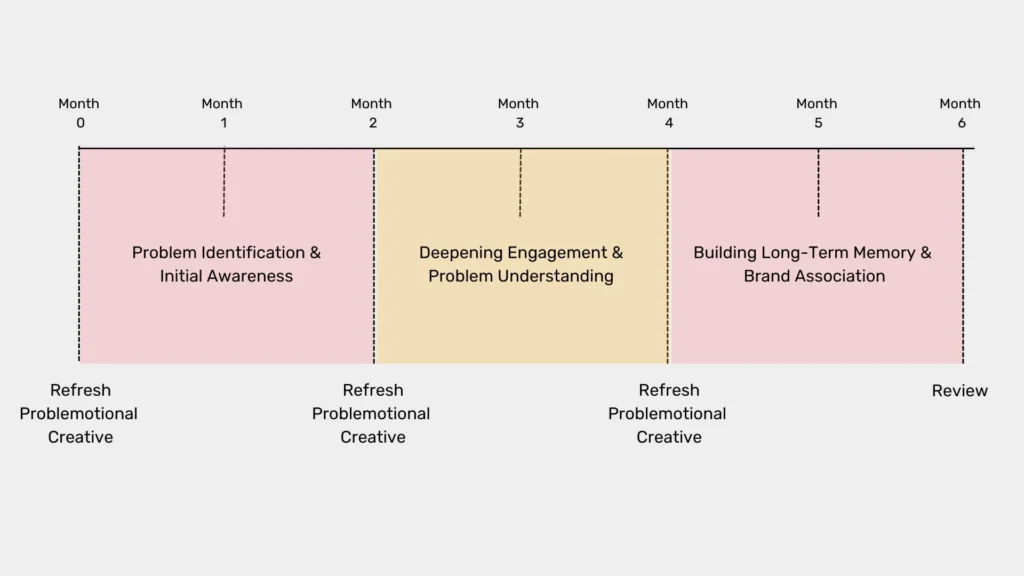
Month 1-2: Problem Identification and Initial Awareness
The first Problemotional Video Creative’s goal is to create intial awareness about your brand and start to create the connection of your brand with the specific problem they have.
Month 3-4: Deepening Engagement and Problem Understanding
The second Problemotional Video Creative’s goal is to make the problem more concrete in the mind of the buyers by introducing a new angle. It’s almost like learning a new word and hearing a second example of it being used. It seals the deal.
Month 5-6: Building Long-Term Memory and Brand Association
The third Problemotional Video Creative’s goal is to repeat the same message in another way, building long-term memory in the mind of buyers of the specific problem and its association with your brand.
After the 6 months, we do Brand Recall surveys to measure the audience’s ability to associate your brand with the specific problem and solution to it.
Who to target for a B2B brand campaign?
Many large B2B companies have several ICP’s. And although with this kind of campaign you want to go broad with less frequency, it can be expensive to target your entire Target Addressable Market.
We’re not trying “boil the ocean.”
We recommend starting with targeting 1 specific ICP if you don’t have a huge brand budget, like most in B2B.
What channels to use for a B2B brand campaign?
The channel(s) that you use to launch your campaign will depend on your ICP and budget.
Where can you target your ICP consistently?
Is there a channel that will allow you to facilitate WOM?
Where can you reach the most for the least amount of budget?
Where to direct the audience of a B2B brand ad?
Considering they are the 95% not ready to buy because of the following reasons:
- Not problem aware
- Problem aware but not perceiving the problem to be valuable enough to solve
- Not in a situation yet where the problem should be solved
- Lacking budget to solve it
- Not yet in the position to solve it
Having them consume the Problemotional content and remembering it is already enough. This is not direct response advertising.
However, there are a couple things to consider where to direct them:
- build a stronger association with the problem
- make it easy to retarget the 5% with your performance advertising
To reinforce the association of the brand with the problem it solves as well as building trust with the brand, the best place to direct these viewers is to valuable educational content about their problem. However, keep in mind that these people still view your brand as a stranger and are unlikely to commit to any significant interaction like a gated ebook or webinar.
This could be ungated content like:
- a content resource hub about the problem
- a specific piece of content like a long-form video or infographic
- a problem-specific landing page, expanding on the problem and introducing your solution
How to retarget brand ad viewers?
The high majority of the viewers will not be ready to buy.
But the few that interact most with the Problemotional content have higher chances of being ready. They are most likely to have related with the pains and want to find out more how to solve them.
Retarget the viewers that:
- Watched a certain percentage of video
- Visited website
- Interacted with ad (i.e. likes)
Ad Frequency – the ideal amount of times the audience sees the ad
Studies have proven that more frequency does not have a significant impact. There are diminishing returns for being exposed to an ad more times in a short period of time.
To quote Dale W. Harrison, a B2B brand marketer who has worked in multiple Fortune 500 companies:
You are FAR better off reaching 10 prospects ONCE, rather than 5 prospects twice or 1 prospect 10 times. That initial exposure takes the prospect from “not knowing” to “knowing,” and that transformation will always have the greatest impact.
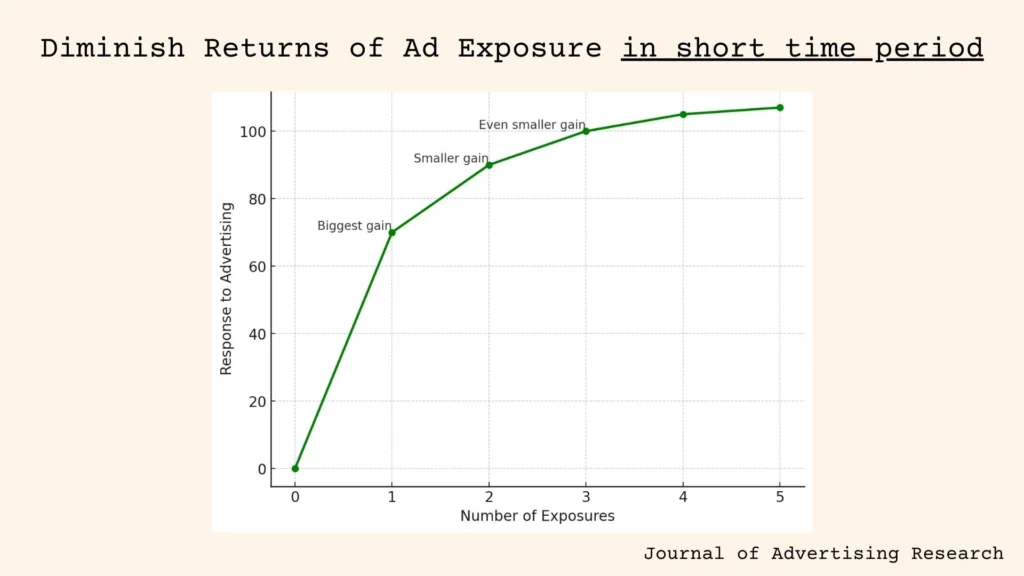
This suggests focusing on ad reach over ad frequency for a B2B brand campaign.
BUT because your ads are being shown randomly, the average ad frequency needs to be high in order to make each person in the ad group see the ad at least once. To quote Dale again, “Frequency is the tax you pay because of the stochastic (random) nature of Reach!”
If you use this formula (don’t get bored on me here)…
𝗙𝗿𝗲𝗾𝘂𝗲𝗻𝗰𝘆 = ~𝗹𝗻(𝗥𝗲𝗮𝗰𝗵) + γ (𝘸𝘩𝘦𝘳𝘦 γ=𝘵𝘩𝘦 𝘌𝘶𝘭𝘦𝘳–𝘔𝘢𝘴𝘤𝘩𝘦𝘳𝘰𝘯𝘪 𝘤𝘰𝘯𝘴𝘵𝘢𝘯𝘵 ~0.577)
Then you can find the average ad frequency needed to ensure your ad is seen by everyone in the group at least once.
10,000 needs ~10x Frequency 100,000 needs ~12x Frequency 1M needs ~14x Frequency
Here’s the problem with the “once is enough” argument…
Memory Decay and Time Interval
Getting your ad seen once and becoming aware of your brand is enough… until it’s forgotten.
According to the Journal of Advertising Research, 50% of viewers will forget the ad and brand after 2 – 3 months. I’d be willing to be that most super boring B2B ads would be forgotten even sooner.
This is why the ad should be consumed at least several times over the 2-month period (in the timeline). And fortunately for us advertisers, each time they consume the ad (or a different ad from the same brand), the association and memory is not just reinforce but also strengthened.
This is what psychologists call Spaced Repetition.
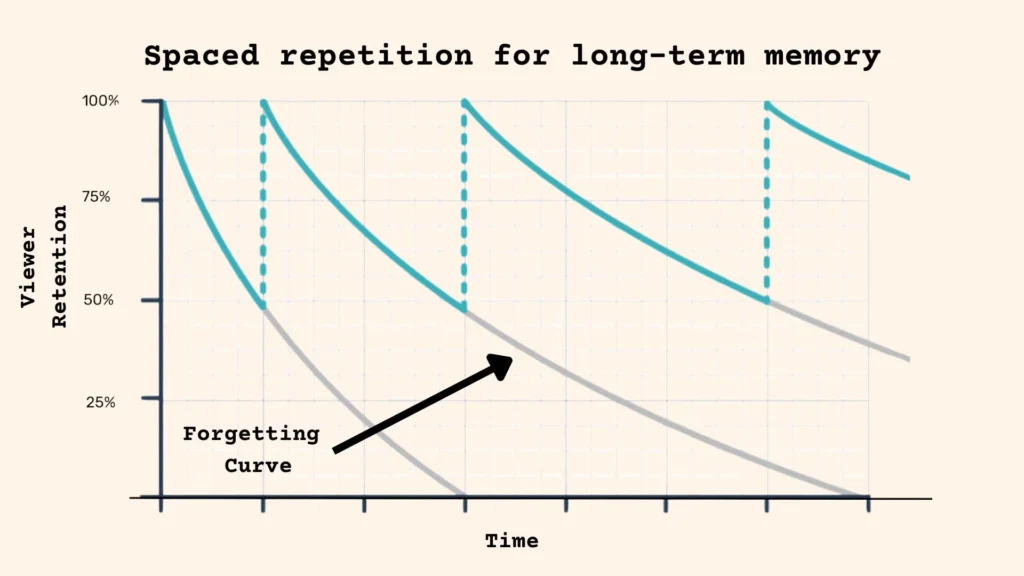
To put it into simple scenario, seeing an ad 5 times in 1 day is worse than seeing an ad 5 times over a several month period. That’s because when there’s time passed between each exposure, the brain retains more for the long-term.
What does this all mean for the cost of brand advertising (or other brand marketing activities)?
Ad Spend Budget
Because 1) creating a memory and association doesn’t require as high of a frequency as many believe and 2) the exposures can be spaced out (to the best of our control), the ad spend budget may not be as much as you would think.
The ad spend budget depends on:
- Channel (i.e. The Linkedin CPM is much more than Meta CPM)
- Ad Group Size (frequency needed)
- Effectiveness of Ad Creative (messaging and memorability)
Doing the math from above, let’s look at an example.
To get an ad seen at least 1 time over 2 months for a group of 10k people…
Average frequency needed: 10x
Impressions: 100,000k
Budget: ~$2,000 over 2 months (with a $20 CPM).
Pacing: Aim for 12,500 impressions per week (1.25 views per person per week).
Note: this means that a large amount of this group will see the ad several times over the 2-month period. Remember that ad platforms randomly show your ads the group. Some will see it once, some will see it 10 times, and some will see it 30 times. Ad platforms do not give us control over this.
How to measure your brand marketing article coming soon!
